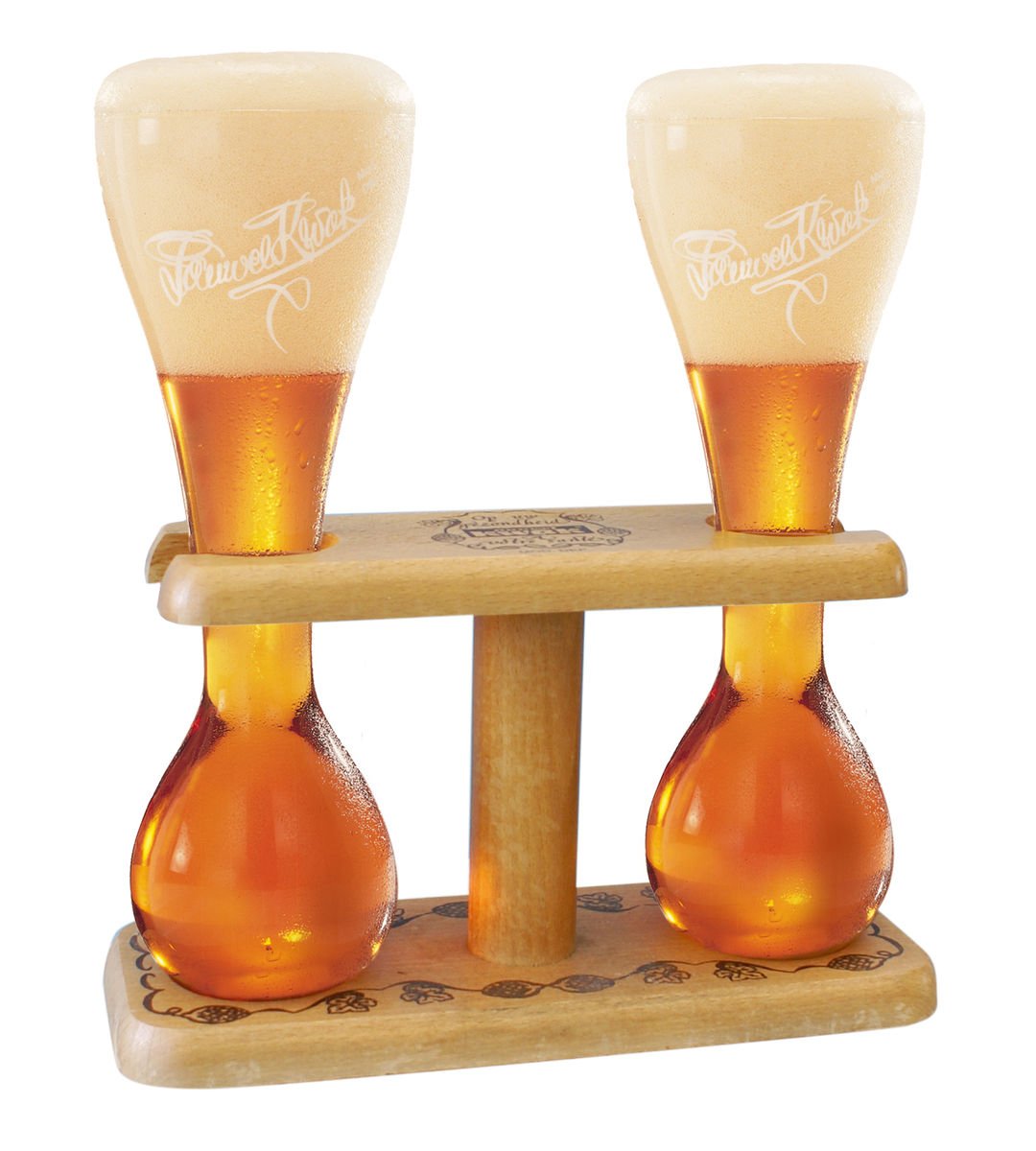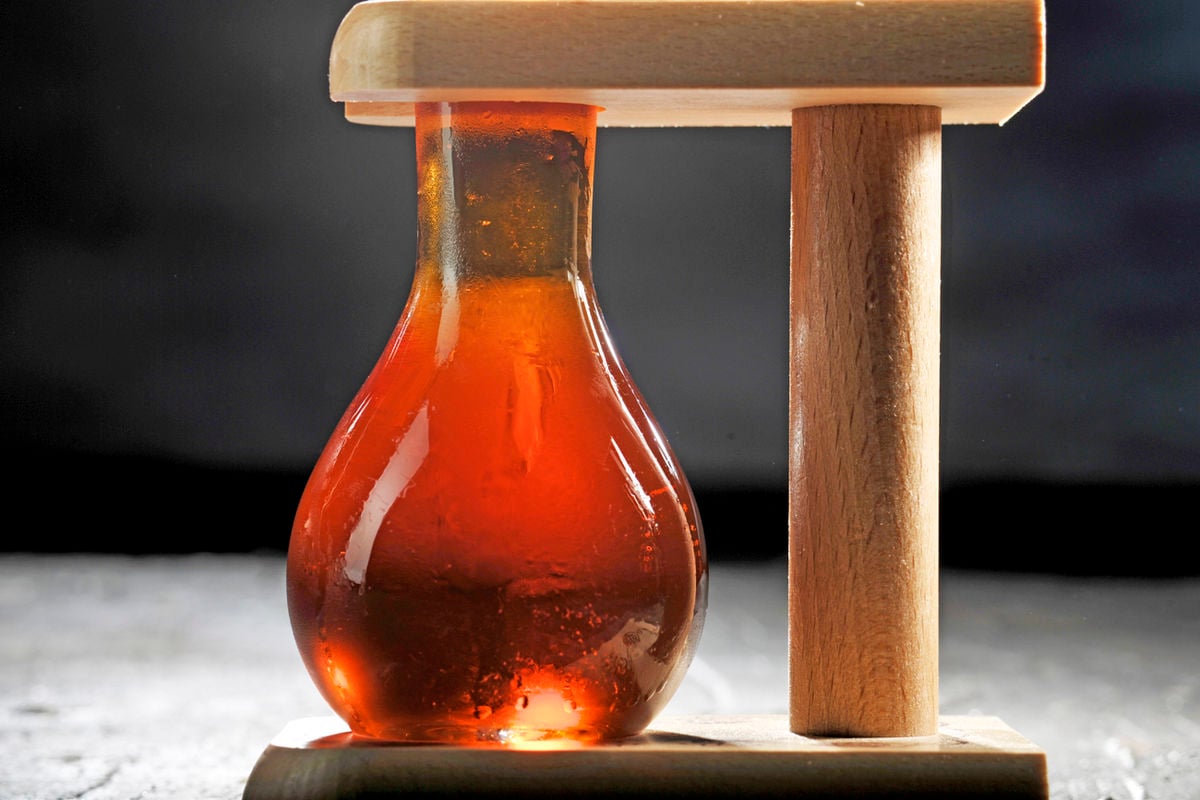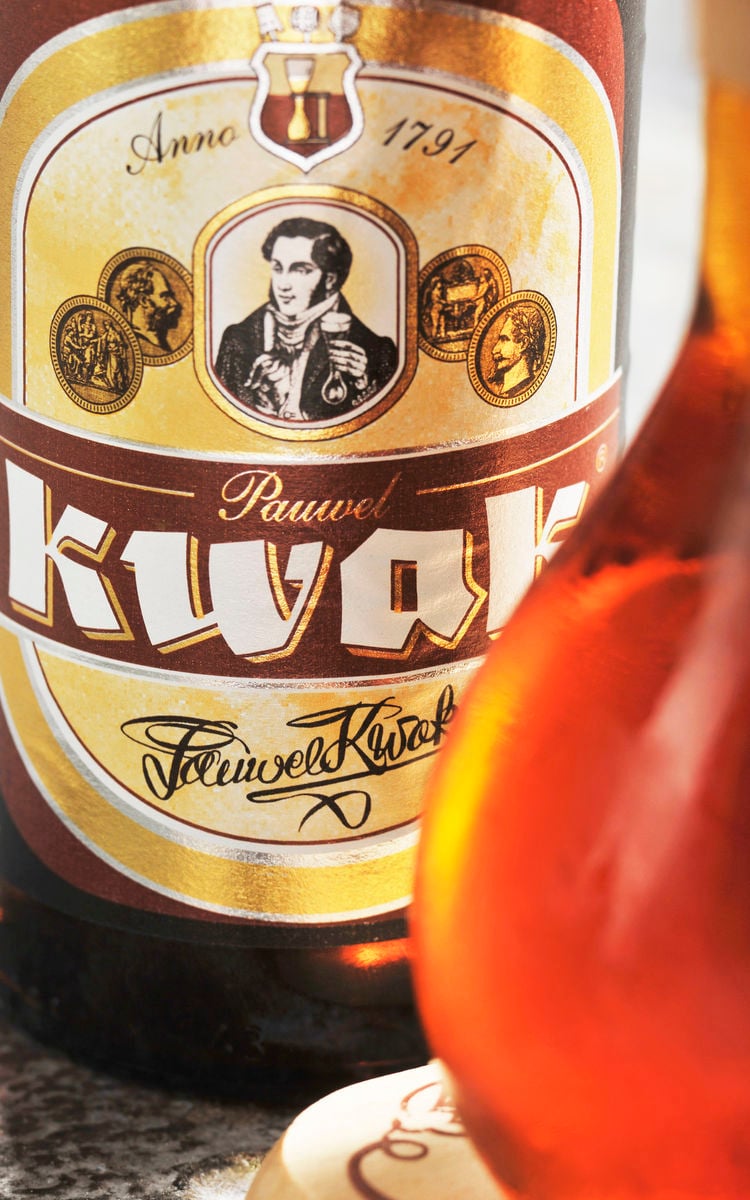Start 14-Day Trial Subscription
*No credit card required

The Prestige of Kwak
Pauwel Kwak, together with DeuS Brut Des Flandres and Tripel Karmeliet, is one of Bosteels Brewery's three brands with worldwide popularity. The prestige of Kwak as a brand today can be traced back to its fascinating origins as well as its singularly stylish glassware. Pauwel Kwak (the beer) is named for Pauwel Kwak (the man), who brewed his own beer for passing coachmen, which was drunk from the now-iconic koetsiersglas -- a bulbous vessel cradled in a wooden handle. To learn how this unique beer came about, we'll take you back to the very beginning of the story.
Imagine this: In a past life, you were an 18th century Flemish coachman. You piloted your one-to-four horsepower vehicle throughout the Denderland, named for the adjacent Dender river, which flows into the larger river Scheldt. You spend your days transporting mail and passengers, navigating routes that traverse through the forests of East Flanders, passing trees of beechwood, crossing over stone bridges and occasionally putting a scare into an unaware squirrel that might be securing an acorn cache in the roadway.
The path of the sun confirms that the day’s end is nigh; just a few more stops. Among them is the De Hoorn Inn, a “coaching inn” on the road between Mechelen and Gent. Here mail coaches and passengers could stop for the night or for a quick meal before hitting the road again.
The De Hoorn Inn is run by none other than Pauwel Kwak, who also brews his own beer. Patrons know they can count on Pauwel to brew his beers dark and heavy, and, as such, the inn is quite popular.
Unfortunately for you, the coach driver, you are legally obligated not to partake in any thirst-quenching activities. Recently established Napoleonic Code forbids coachmen from abandoning their posts to drink beer with their passengers, and from what you have heard, this little man with a big empire is not to be trifled with. So week after week you sit, parched and sober, hearing the sounds of clinking glasses and Flemish songs of merriment twinkling through the windows of the De Hoorn inn.
But fear not, because Pauwel Kwak is a benevolent man who will stop at nothing to bring his beer to anyone who desires it.
The solution? Kwak creates what may be the most iconic beer glass of all time.

Pauwel Kwak (the beer) is named for Pauwel Kwak (the man), who brewed his own beer for lucky Flemish coachmen in the 18th century that were able to stop and sample his wares.
Modern Kwak
The Kwak we know today is a recipe formulated in the 1980s by Brouwerij Bosteels in nearby Buggenhout. The brewery is known for its legendary three-beer lineup, which also includes Tripel Karmeliet and DeuS Brut des Flandres.
Pauwel Kwak is a top-fermented, filtered and pasteurized ale that clocks in at a surprising and deceptively strong 8.4 percent ABV. Like its Bosteels brethren, its ingredients are simple – barley malts, wheat, hops, white candy sugar. Bosteels’ characteristic mineral water is drawn from a depth of over 100 meters, and boasts a soft, low saline content, one of this beer’s many distinct attributes.
 Kwak fermentation takes place in “cylindroconical tanks at a temperature of between 73-81°F,” according to Bosteels, over the course of five to six days. Each batch is good for about 100,000 bottles. Once fermentation is complete, the beer undergoes a month-long maturation process at the lowest possible temperature, around 27°F. The beer is then filtered before packaging, beginning its journey to a carriage near you.
Kwak fermentation takes place in “cylindroconical tanks at a temperature of between 73-81°F,” according to Bosteels, over the course of five to six days. Each batch is good for about 100,000 bottles. Once fermentation is complete, the beer undergoes a month-long maturation process at the lowest possible temperature, around 27°F. The beer is then filtered before packaging, beginning its journey to a carriage near you.
The first thing you will likely notice about the beer itself is its striking ruby-amber color. Your gaze will then travel upward to the thick, cumulous head atop the beer, which requires its own special pour – beginning gently along the tilted side of the glass until the bulb is full, and gradually transitioning to a more aggressive, vertical angle during the last few fingers of the pour. The brewers recommend a serving temperature of 42°F to 44°F.
Described as a Belgian Strong Pale Ale, sweet aromatic notes are prominent on the nose, ranging from caramel malt to brown and demerara sugar, and dried fruits such as apricot and prune.
The aromas don’t lie. Upon first sip you will be greeted with an explosion of flavor attributes, including a continuation of dried fruit and caramel, which mingle with licorice, playful banana and bubblegum esters, zesty orange and apple, cookie dough and a hint of spicy Belgian yeast before finishing sweet and warming.
Hopping stays in the background, acting to pull the constituent parts together with restrained bitterness and hints of fruit.
Kwak deftly dances the fine line of sweetness without being cloying, and features a full-bodied mouthfeel without becoming overly viscous, chewy or cakey. Its carbonation manages to contribute that notably crisp quality that can set a beer apart and allow for incredibly easy transition from glass to tummy.
Its overall impression is that of an easy-drinking yet powerful thirst quencher. Kwak’s delicate sweetness superbly masks its alcohol content and tempts you to keep coming back for more. I found myself taking gulps rather than sips, due to its refreshing nature, and delighting in the veritable playground it creates on the palate. Even without the glass, it is an invigorating experience and one all beer aficionados should seek out.
The Glass Factor
Is a Kwak without the legendary koetsiersglas (coachman’s glass) a Kwak at all? Yes and no. The beer succeeds as a standalone entity, glass or not. But I would argue that to truly experience Kwak, it should be drunk from its specialty glass. It’s somewhat of a transcendent experience.
You may feel a bit intimidated when the wooden contraption is placed in front of you. I found myself wondering exactly how I was supposed to drink from it, and worrying I’d drop the glass, spill it, or somehow find a way to desecrate this sacred family heirloom. Upon further research, I was not alone in my confusion, as there are numerous how-to articles and videos online, created with various levels of authority.
It’s tempting to want to remove the glass from its holster, but if you do, beware that the bulb on the bottom will not sit straight on its own. If you let go, it’s game over. Similarly, if you were to carelessly hold the wooden handle at the wrong angle, the glass may tip out. Therefore, you must carefully lift the entire apparatus and tilt it lovingly towards your lips. If you don’t care about looking refined, use your non-dominant hand to steady the glass, as I did. If you’re confident, just grip it and rip it like a true coachman and return it to its holster post-sip.
I noted less than 10 rings of lacing on my coachman’s glass – and I believe that the shape of the glass itself contributes to rapid quaffing of Kwak. Its seductive contours offer familiar, defined benchmarks in the journey to the bottom of the glass – each cascading the elixir into your gullet at a different velocity and wafting the bouquet upward in a concentrated vector.
Each sip requires foresight and planning, which takes a bit of time, allowing the flavor to slowly evolve as the beer warms and bubbles away. For these reasons, I feel there’s no drinking experience quite the same.

As enticing as it is bewildering, Kwak's preferred serving method is within the bulb-shaped koetsiersglas (or coachman's glass), which also employs a wooden holster. Be wary though, as the bottom-heavy glassware will slip out of its divot if tipped over too heartily.
Marketing Mastery
In a veritable ocean of ale, finding a way to stand out is paramount. With Kwak, Bosteels achieves singularity in many ways. How many other articles of glassware can you think of that force you to slow down and appreciate the contents? Do any others look so unique, with the local lore to boot? The koetsiersglas is a conversation piece and a drinking statement, all blown into one tall and lanky piece of glass.
The glass has even spawned an apocryphal tale or two. Some claim that the “Kwak” moniker is an onomatopoeia, referring to sound made when you’ve reached the stem above the rounded bottom portion of the glass. When drinking at this stage, air will bubble into the bulb in a manner that produces a rapid, audible “quack.” Hence the name.
Whether or not this phenomenon is intentional or merely a happy accident, it adds to the special charm that Bosteels is able to imbue within each of its brands.
Branding is another area in which the Bosteels family has shone brightly, always insisting on keeping its brands separate, rather than packaging Kwak, Tripel Karmeliet and DeuS as “Bosteels’ beers.”
Bosteels allows each beer to take on a life of its own, without overtly taking credit for them. The logic is that these individual, standalone brands boast more charm and clout than a “Made in Belgium” angle. If you love it, let it go and have a life of its own.
Kwak’s brewers do indeed love their beers, and they let them go all around the world by way of export. Roughly 55 percent of the brewery’s production is exported, and much of that comes to the U.S. Recent numbers had barrelage over 120,000 bbl, a number that has increased significantly from 2013's barrelage of 85,000 barrels due to both internal growth and investment, and continuous sales growth within Belgium and surrounding countries.
Where and How to Enjoy
Whether you drive a coach, a taxi or an Uber, seek this beer out and pair it with a creamy, powerful cheese or rich game dish such as smoked ham or beef stew. If you’re feeling authentic, try it with pigeon and pickles – a Belgian delicacy. Kwak’s sweetness contrasts beautifully with bitter foods and complements most others. You can find Kwak on-tap or bottled in specialty beer bars and cafes around the world.

Brouwerij Bosteels is able to imbue charm within each of its brands, though Kwak makes it easy.




Comments